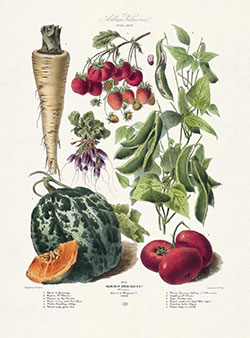Charleen Barr
Colorado State University Extension Master Gardener in Larimer County
April 25, 2015

They never stop arriving. The mailbox is stuffed and the recycle bin is full. The colorful covers entice gardeners to buy glorious blooms and ripe vegetables. Seeds and bare-rooted plants are a thrill to watch as they develop into robust plants.
Seed packets have a wealth of knowledge. Read them carefully and find out everything from planting depth and germination time to an estimated size. Moisture requirements, light and often an expiration date are available in order to know how fresh the seeds are for best germination.
Photos and pictures show a magnificent plant while the fine print may be a surprise. An annual lasts only a year, unless it is self-seeding. A perennial will return year after year, while a biennial needs two years to bloom. Some seeds benefit from scarification (sanding or scratching the seed coat) or require stratification (a period of cold storage). In order to obtain the best results, prepare yourself by reading the fine print. It is a good idea to keep the seed package after sowing as a reference for future care and harvesting.
Learn to interpret garden catalog jargon. Often imaginative descriptions in the plethora of catalogs received sound too good to be true, cross check the plant with another source, or call the extension office for additional facts. (Colorado State University Extension in Larimer County can be reached at 970-698-6000 or cmg.extension.colostate.edu/.) Remember, the photos are of well-established plants at their very best. The plant probably won’t look like that picture for years.
If a catalog says a plant is vigorous, be ready to dig it out all over your garden as it runs wild. If you hope for a fast-spreading ground cover it might creep rather than spread. If the label says tall, it probably needs staking. If a catalog says a plant is a heavy feeder be ready to fertilize. Descriptions often include “delicate, diminutive flowers”, put on your glasses to admire the blooms. Beautiful foliage often means little or no noticeable flower, which isn’t a bad thing. Foliage is beautiful. How about blue flowers? It is really hard to find a plant with true blue flowers as they are probably closer to lavender or purple, but there are a few, and improvements in flower color happen every year. Remember, if it attracts butterflies it also attracts other pollinators. How close do you want bees? How much do you like caterpillars?
Catalogs are filled with words like fragrant, graceful, vibrant, shiny, unusual, crisp, rich, or flavorful. What fun it must be to use adjectives and write these descriptions. While gaining experience as a gardener, the best way to learn about a plant is to grow it. Knowledge is the best protection from disappointment. Catalogs usually have many “divisions” of the same company. Look closely and discover that many of the photographs are exactly the same, as are addresses. Prices vary, but trying to get the best price from several catalogs may end up costing more in shipping.
Gardening expectations are skewed by the pretty photographs. The gardener’s motto should be “patience is a virtue” or “don’t judge a plant by its photo.” Gardeners need to tolerate and appreciate all of the glorious or yucky phases within the life of our garden. So enjoy those catalogs, have fun, plan the garden and imagine the best of the best. Before long it will be time to go outside and get your hands dirty.
The author has received training through Colorado State University Extension’s Master Gardener program and is a Master Gardener volunteer for Larimer County.
——————-
Larimer County is a county-based outreach of Colorado State University Extension providing information you can trust to deal with current issues in agriculture, horticulture, nutrition and food safety, 4-H, small acreage, money management and parenting. For more information about CSU Extension in Larimer County, call (970) 498-6000 or visit www.larimer.org/ext
——————-
Looking for additional gardening information? Check out the CSU Extension Horticulture Agent blog at www.csuhort.blogspot.com for timely updates about gardening around the state.
——————-
Visit PlantTalk Colorado ™ for fast answers to your gardening questions! www.planttalk.org PlantTalk is a cooperation between Colorado State University Extension, GreenCo and Denver Botanic Gardens.





